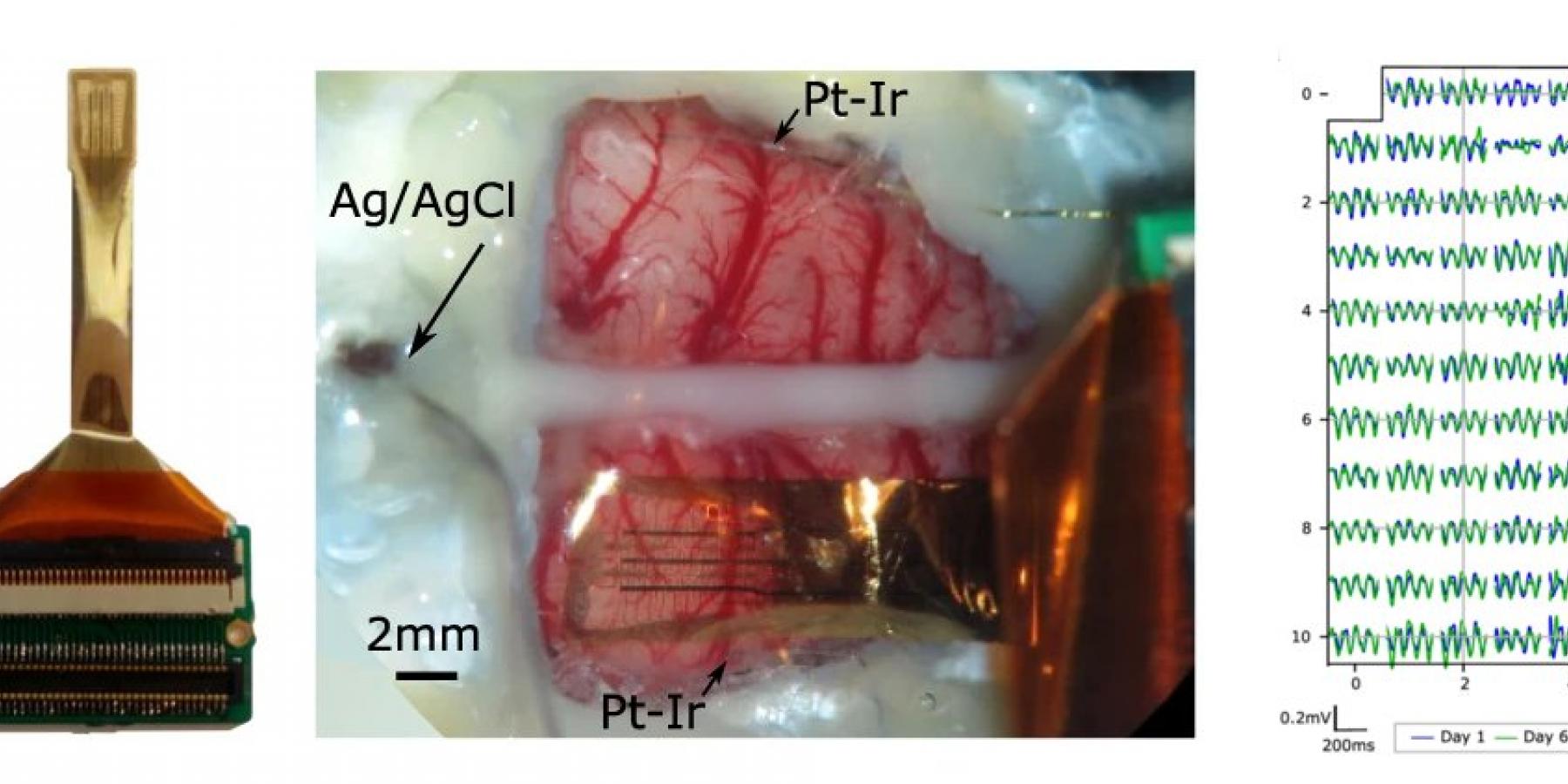New Nature Communications paper about wireless mapping of brain activity
"Graphene active sensor arrays for long-term and wireless mapping of wide frequency band epicortical brain activity" is the new paper published in Nature Communications. It has the contribution of three Biomedical Applications Group (GAB) members.

Xavier Illa, Eduard Masvidal-Codina and Anton Guimerà-Brunet are the three GAB members who contributed to the research.
Graphene active sensor arrays for long-term and wireless mapping of wide frequency band epicortical brain activity
Graphene active sensors have demonstrated promising capabilities for the detection of electrophysiological signals in the brain. Their functional properties, together with their flexibility as well as their expected stability and biocompatibility have raised them as a promising building block for large-scale sensing neural interfaces. However, in order to provide reliable tools for neuroscience and biomedical engineering applications, the maturity of this technology must be thoroughly studied. Therefore, the researchers evaluated the performance of 64-channel graphene sensor arrays in terms of homogeneity, sensitivity and stability using a wireless, quasi-commercial headstage and demonstrate the biocompatibility of epicortical graphene chronic implants. Furthermore, to illustrate the potential of the technology to detect cortical signals from infra-slow to high-gamma frequency bands, they perform proof-of-concept long-term wireless recording in a freely behaving rodent. The work demonstrates the maturity of the graphene-based technology, which represents a promising candidate for chronic, wide frequency band neural sensing interfaces.
The Biomedical Applications Group (GAB), led by Dr. Rosa Villa, is currently exploring micro and nano-technologies, such as graphene, to provide advanced tools to tackle the medical challenges of the future.
The paper has been published in Nature Communications on 11th January.




